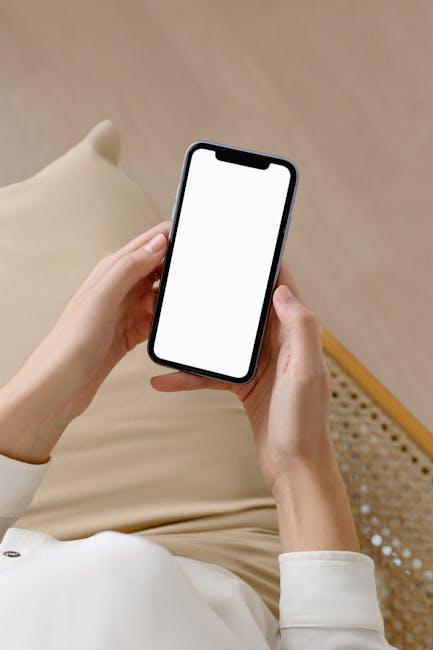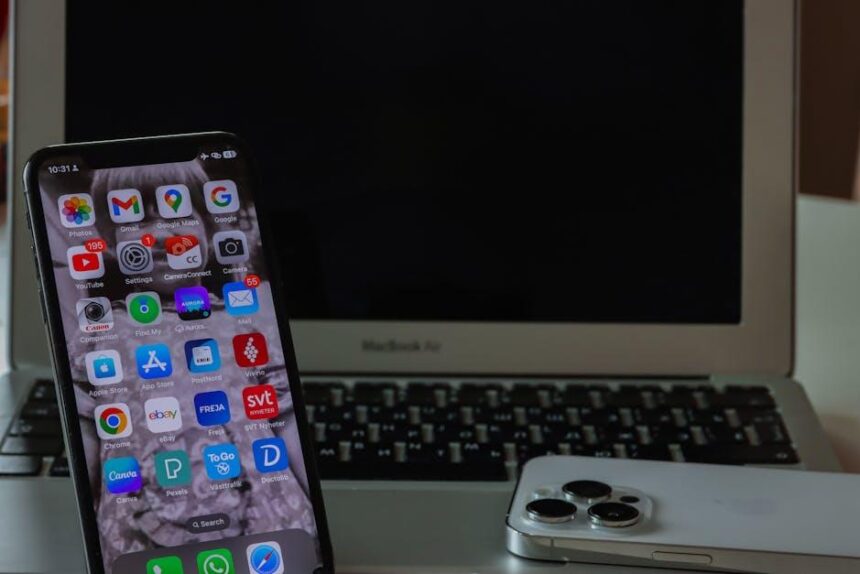Unlocking your MacBook has never been easier, thanks to the seamless integration of Touch ID technology. This innovative feature not only enhances security but also streamlines your everyday tasks, allowing you to access your device, make purchases, and autofill passwords with just the press of your finger. In this guide, we’ll explore the fundamentals of setting up and using Touch ID on your MacBook, providing you with simple steps and troubleshooting tips to ensure a smooth experience. Whether you’re a seasoned user or a newcomer to the Apple ecosystem, mastering Touch ID will transform the way you interact with your Mac.
Exploring the Basics of Touch ID Setup on Your MacBook
Setting up Touch ID on your MacBook is a straightforward process that enhances your security while providing quick access to your device. Follow these steps to ensure a smooth setup:
- Open System Preferences: Click on the Apple icon in the top left corner of your screen, then select System Preferences.
- Select Touch ID: Find and click on the Touch ID icon within System Preferences.
- Add a Fingerprint: You’ll see an option to add a fingerprint. Click the Add a Fingerprint button.
To add your fingerprint, follow these instructions:
- Position Your Finger: Rest the finger you wish to use on the Touch ID sensor (located on the top right of your keyboard).
- Modify Your Finger Position: Lift and place your finger at different angles as prompted. This will help capture a complete fingerprint image.
- Complete Setup: Once your fingerprint is successfully registered, you will see a confirmation message. You can add additional fingerprints if desired.
Touch ID can be used for the following:
- Unlocking Your MacBook: Quickly access your device without entering a password.
- Purchasing Apps: Use Touch ID for secure purchases from the Mac App Store.
- Apple Pay: Approve transactions with just your fingerprint when shopping online.
To manage your Touch ID settings, including adding or removing fingerprints:
| Action | Step |
|---|---|
| Add Fingerprint | Click Add a Fingerprint and follow the prompts. |
| Remove Fingerprint | Click on the fingerprint you want to remove and select Delete. |
For enhanced security, it’s best to register multiple fingerprints for family members or other trusted individuals, ensuring that only authorized users can access or purchase through your MacBook.

Maximizing Security with Touch ID: Tips for Protection
To ensure you’re maximizing the security of your MacBook with Touch ID, follow these essential tips that cater specifically to a US audience:
- Set Up Touch ID Properly: Ensure you enroll your fingerprint correctly. Go to System Preferences > Touch ID and follow the prompts to add multiple fingers, as this can enhance accessibility and security.
- Use Strong Passwords: While Touch ID is highly secure, your Apple ID and device password should still be robust. Use a mix of letters, numbers, and symbols to create a password that is difficult to guess.
- Enable Two-Factor Authentication: Layer additional security by turning on two-factor authentication for your Apple ID. This adds a second verification step when accessing your account, safeguarding sensitive information.
- Keep Software Updated: Regularly check for macOS updates. Apple frequently releases security patches that protect against vulnerabilities. Go to System Preferences > Software Update to ensure you are running the latest version.
- Be Cautious with Public Wi-Fi: Avoid using Touch ID for sensitive transactions when connected to public networks. Consider using a VPN service to encrypt your internet connection when you must access sensitive information.
- Limit Fingerprint Access: Only enroll the fingerprints of trusted individuals and consider removing fingerprints that you no longer need access. You can manage this in the Touch ID settings to reduce unauthorized access.
- Regularly Review Account Activity: Keep an eye on your financial and online accounts. If you notice any suspicious activity, be proactive in reporting it to your bank or credit provider.
- Use Secure Payment Options: For transactions, utilize Apple Pay where possible. It leverages Touch ID for secure payments, adding another layer of protection for your financial data.
| Tip | Description |
|---|---|
| Touch ID Enrollment | Enroll multiple fingers for accessibility. |
| Strong Passwords | Create complex passwords for maximum security. |
| Two-Factor Authentication | Add a verification layer to your accounts. |
| Software Updates | Keep your macOS current with the latest patches. |
| Public Wi-Fi Precautions | Avoid sensitive tasks on untrusted networks. |

Navigating Touch ID Features: Beyond Unlocking Your Device
Touch ID on your MacBook is not just about quickly unlocking your device; it opens up a world of convenience and security that can enhance your daily digital life. Here’s how you can maximize this feature:
- Authorize Purchases: Use Touch ID to make quick and secure purchases from the iTunes Store, the App Store, and Apple Books. Simply place your finger on the Touch ID sensor to confirm your transaction, streamlining your shopping experience without the need to enter passwords.
- Apple Pay Integration: With Touch ID, making purchases on the web is more secure and efficient. Many retailers, from Amazon to Best Buy, accept Apple Pay, allowing you to check out quickly by just tapping your finger.
- Sign into Apps: Some third-party applications, like banking apps from institutions such as Bank of America and Chase, support Touch ID. This means you can access sensitive information, perform transactions, or manage your accounts with just a fingerprint.
- Fast User Switching: If multiple users are set up on your device, use Touch ID to switch profiles effortlessly. Forgetting passwords when switching users is now a thing of the past.
- System Preferences Security: Enable Touch ID to unlock system preferences, ensuring that only you can make changes to your Mac settings. This adds an additional layer of security to sensitive areas of your device.
- App or Document Lock: Some applications allow you to secure specific documents or data. Enable Touch ID for these features to prevent unauthorized access.
By understanding these features, you can use Touch ID not just as a security measure, but as a versatile tool that enhances your MacBook’s functionality!

Troubleshooting Common Touch ID Issues for Seamless Access
If you’re finding that your Touch ID isn’t working as expected, don’t worry; common issues can often be resolved with some straightforward troubleshooting steps. Here are some tips to help you regain seamless access to your MacBook:
- Check for Software Updates: Ensure that your operating system is up to date. Navigate to System Preferences > Software Update to see if any updates are available.
- Clean the Sensor: Sometimes, smudges or dirt can interfere with the functionality of the Touch ID sensor. Use a soft, lint-free cloth to gently clean the area.
- Re-register Your Fingerprint: If Touch ID isn’t recognizing your fingerprint, it may help to delete your existing fingerprints and re-add them. Go to System Preferences > Touch ID, remove the fingerprint, and follow the prompts to add a new one.
- Use a Different Finger: If re-registration doesn’t work, try registering a different finger. Sometimes, particular fingers may not work well due to various factors such as moisture or residue.
- Remove A Case or Screen Protector: If you’re using a case or screen protector that might cover the Touch ID button, remove it to see if that resolves the issue.
- Restart Your Mac: A simple restart can resolve many minor glitches. Click on the Apple logo in the top-left corner and select Restart.
- Check for Accessibility Features: Ensure that no accessibility settings are interfering with Touch ID. Go to System Preferences > Accessibility and take a look at any features you may have enabled.
- Reset the NVRAM: Resetting your Mac’s NVRAM can also help. Shut down your Mac, then turn it on and immediately press and hold Option + Command + P + R for about 20 seconds.
If you’ve tried all of these suggestions and Touch ID still isn’t functioning, it may be worth contacting Apple Support for further assistance. Regular usage of Touch ID can enhance your experience when accessing secure sites or payment systems, like Apple Pay or online banking through institutions such as Chase or Bank of America.
| Issue | Possible Solution |
|---|---|
| Touch ID not recognizing fingerprints | Re-register fingerprints or try a different finger. |
| Software issues | Check for system updates; restart the Mac. |
| Dirty sensor | Clean the Touch ID sensor gently. |
| Accessibility conflicts | Review accessibility settings. |
| Hardware issues | Contact Apple Support for repairs. |

In Summary
In conclusion, unlocking your MacBook with Touch ID not only elevates your security but also enhances your user experience, making access seamless and intuitive. By setting up this simple yet powerful feature, you can transform the way you interact with your device. Whether it’s logging in, authorizing purchases, or securing sensitive data, Touch ID offers a convenient solution right at your fingertips. Embrace the future of personal computing-where your unique fingerprint is the key to a world of possibilities. Now that you’re equipped with the knowledge to set up and use Touch ID effectively, it’s time to enjoy the blend of technology and simplicity that your MacBook offers. Happy unlocking!












